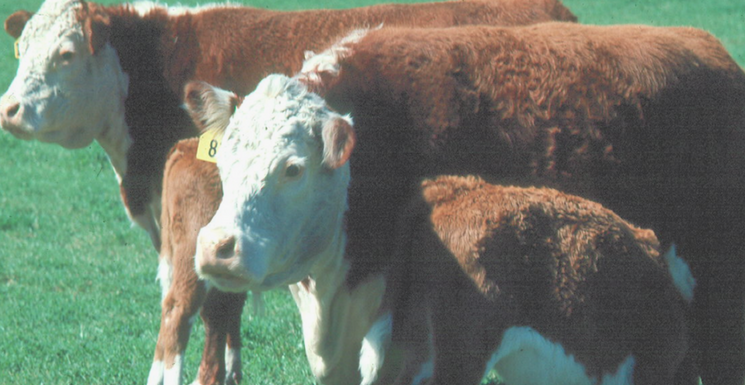
Annual ryegrass is often planted on the dormant pastures of warm-season forages, especially bahiagrass and bermudagrass. However, other warm-season forage crops including dallisgrass, crabgrass, broadleaf signalgrass, and sericea lespedeza can also be overseeded. The dependability and value of this practice has been thoroughly verified by university research, and thousands of livestock producers have benefitted from the practice.
Benefits Of Overseeding
“Overseeding” is the term generally used to refer to broadcast-seeding winter annual forage crops on summer pastures, with or without disking or other tillage. “Sod-seeding” usually refers to planting annual crops via use of a drill. In this article the term overseeding will encompass both approaches.
Annual ryegrass and other winter annuals produce high quality forage; much higher than produced by warm-season perennial grasses. Cows have their highest nutritional requirements from two months prior to calving until they are re-bred. In many areas, most cows calve in late winter or early spring and are bred again within three months after calving. The peak production of ryegrass forage is also in early- to mid-spring, which is the time it can greatly affect calf weight, calf health, and conception rates of cows.
Overseeding can extend the grazing period of a pasture by two months or more, thus helping reduce the need for expensive stored feed. In addition, when winter annuals are overseeded on a warm season sod, there is less hoof damage by grazing animals compared to winter annuals planted on a prepared seedbed. This can be particularly important on soils that tend to stay wet during the cooler months of the year.
Planning For Overseeding
Annual ryegrass is by far the most widely overseeded winter annual forage crop, but various other winter annuals are often planted with it. When ryegrass is the only species used, in most areas it typically makes little growth until mid- to late winter, depending on geographical location. For this reason, small grain such as rye, wheat, or oats, or sometimes a non-leguminous forb such as turnip, rape, or forage radish are often planted with it for the purpose of obtaining earlier grazing. However, a drill or significant tillage is needed to properly plant small grain due to larger seed size and thus the need to cover the seed (ideally) with at least one inch of soil.
The benefit of nitrogen fixation is obtained when legumes are planted with ryegrass. A good legume stand can fix 50 to 150 pounds or more of nitrogen per acre per year. Some of this nitrogen will benefit ryegrass and any other plants growing with the legume, but the greatest nitrogen benefit typically goes to the warm season grass during late spring and summer. This comes from urine and dung excreted by the grazing animals that consumed legume forage, as well as from decomposing legume growth. Where a good stand of overseeded legumes has been obtained, the first nitrogen application of the season to the summer grass can be omitted.
On non-irrigated sandy soils, crimson clover, arrowleaf clover, and ball clover are often legumes of choice. Crimson clover makes the most early spring growth, followed by ball clover, and then arrowleaf clover. On heavier soils or irrigated sites, white clover and red clover can make a significant amount of growth in mid- to late spring, and in the case of red clover, even into summer when adequate moisture is available. It is important to learn what soils and sites best suit various forage species before making species selection decisions.
Beef cow-calf operators should normally overseed no more than one-third to one-half of their summer pasture acreage unless any excess winter forage can be baled as hay or ensiled. Otherwise it will be difficult to utilize the forage in the spring. The cost of overseeding winter annuals is usually only about half that of planting winter annuals on a prepared seedbed.
Got more questions about winter forage? Visit our advice here.
__________________
Foraging Ahead is a column presented by Ragan & Massey and written by Dr. Don Ball, Professor Emeritus at Auburn University. Dr. Ball is one of the authors of the popular book “Southern Forages” available here.
